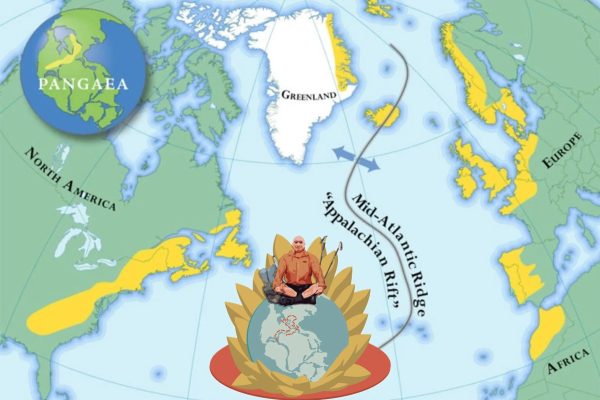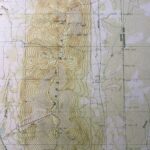
This summer, I had the pleasure of speaking with thru-hiker Lo Phong La Kiatoukaysy, known on trail as Lil’ Buddha. Through our conversation, I was able to glean some insight into Lil’ Buddha’s experience on the IAT and his plans to complete the hiking route that he is pioneering, the Pangaea Traverse.
Lil’ Buddha grew up in Kansas in a Hmong-American family. When asked how he first got into thru-hiking, Lil’ Buddha noted that he was always hiking, backpacking, and camping with extended family, especially out in Colorado. Lil’ Buddha embarked on his first thru-hike at the age of 19. Two months before the fall semester at the University of Kansas, Lil’ Buddha decided to hike the John Muir Trail, which he learned about by reading Ray Jardine’s Pacific Crest Trail Hiker’s Handbook. (Jardine was the first person to popularize using homemade lightweight gear and techniques, including early start times with longer days and more mileage at a slower pace. Lil’ Buddha was part of the first generation of ultralight backpackers following Jardine.) Later in life, after moving to New York City, working in corporate America, and surviving the 9/11 attack on the Twin Towers, Lil’ Buddha used his free time and sabbaticals to hike the Pacific Crest Trail (PCT), the Continental Divide Trail (CDT), and the Eastern Continental Trail (ECT). He has since hiked each of the trail systems three times each, making him the first known Asian American and Hmong-American to achieve the Triple Triple Crown thru-hiker status.
Lil’ Buddha first encountered the IAT in 2010, after hiking the PCT and following legendary thru-hiker Nimblewill Nomad. That year, he embarked on a northbound hike of the ECT, which includes the IAT. In 2019, he completed a southbound hike of the ECT, beginning at Cap Gaspé. Finally, in 2023, Lil’ Buddha thru-hiked the ECT for the third time, from Florida to the tip of Newfoundland. This hike, completed in October 2023, marked the beginning of Lil’ Buddha’s endeavor to hike the Pangaea Traverse, “a multi-year, transatlantic expedition across the geographically separated spine of the ancient Central Pangea Mountains, from Key West, Florida, to Mount Toubkal, Atlas Mountains, Morocco.”
Lil’ Buddha noted that the concept of the Pangaea Traverse is inspired, in many ways, by the IAT. However, whereas the IAT’s trails are geographically disconnected, the Pangaea Traverse seeks to piece together the remnants of the Central Pangaea Mountains as continuously as possible. Many of the trails that make up the Pangaea Traverse (an additional 8,000-9,000 miles) are not officially part of the IAT but have been co-branded as “possible” by the organization. According to Lil’ Buddha, “since Pangea no longer exists and is now split into the continents we know today, a Pangea Traverse is not possible in the literal sense. The hypothetical route is an amalgamation of several established thru-hiking trails, backcountry routes, a cross-network of walking and cycling paths, and route planning.” Lil’ Buddha’s hike of the Pangaea Traverse has been divided into three sections, each spanning approximately 6,000 miles (the Pangaea Traverse totals about 17,500 miles).
After his 2023 hike of the North American section of the Pangaea Traverse, Lil’ Buddha planned to complete the second section of the hike – Greenland, Iceland, and the UK – this summer. However, a leg injury has kept him off trail. Lil’ Buddha will return to the Pangaea Traverse once he is fully recovered and said that he has not felt pressed for time, since this will be the most extensive hike of his career.

When asked what he has found most special about his experience hiking the ECT/IAT/North American section of the Pangaea Traverse, Lil’ Buddha emphasized both the transition through various landscapes and peoples, and the sense of connectivity across the North American landscape.
At the southernmost point of the ECT in Florida, there is a great deal of biodiversity with the wetlands, and there are beautiful sunsets and cloudscapes. Lil’ Buddha noted that at Flagg Mountain in Alabama, the first 1,000-foot mountain of the North American section, one begins to get a sense of the Appalachian Mountains that gradually increase all the way past Katahdin (along the IAT). Such gradual changes in the landscape provide a feeling of connectivity. Additionally, Lil’ Buddha pointed out that the ECT runs from the Atlantic to the Atlantic – when he reached the northernmost terminus in Newfoundland in 2023, it was the first time he had seen saltwater in five months, since the beginning of his hike.
The ECT also passes through several peoples across North America. In particular, Lil’ Buddha noticed the changes in dialects and language, from Southern American English to Appalachian English to Québécois French to Newfoundland French. But Lil’ Buddha also recognized peoples’ hospitality towards thru-hikers in all parts of the continent.
According to Lil’ Buddha, although East Coast hiking is often overlooked, the IAT is a precious trail in the U.S. and Canada. Importantly, the IAT and its routing along roads, in particular, put thru-hikers in touch with the peoples of the most northeastern corner of North America.
Read more about Lil’ Buddha’s hiking experience and about the Pangaea Traverse on his website, https://lilbuddhahikes.org/home, or take a look at his Instagram, @lilbuddhahikes.





